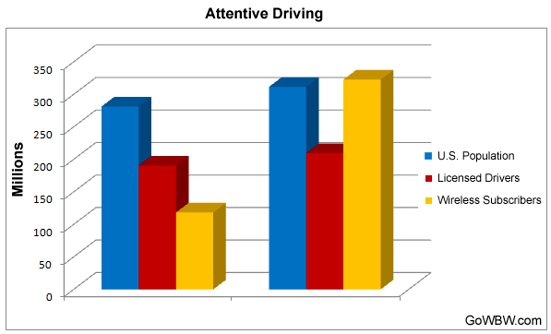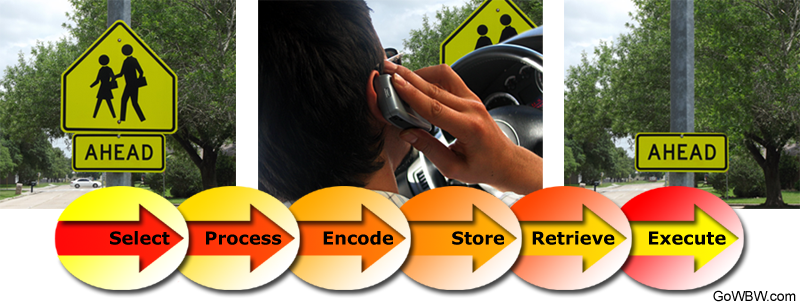
Employees may feel pressure to improve productivity by multi-tasking in order to keep up with responsibilities and the ever increasing availability of in-vehicle cell phone technology makes multi-tasking more accessible and tempting. Since drivers are increasingly tempted by distractions, training to avoid distracted driving demands more and more attention.
Here are a few key points about distracted driving:
-
At any given daylight moment across America, approximately 660,000 drivers are using cell phones or manipulating electronic devices while driving, a number that has held steady since 2010 (NOPUS).
-
Engaging in visual-manual subtasks (such as reaching for a phone, dialing and texting) associated with the use of hand-held phones and other portable devices increased the risk of getting into a crash by three times. (VTTI)
-
Five seconds is the average time your eyes are off the road while texting. When traveling at 55mph, that's enough time to cover the length of a football field blindfolded. (VTTI)
-
Hands-free cell phone use is not substantially safer than hand-held use. (VTTI)
-
It is estimated that distracted drivers are a factor in between 20 to 25% of all traffic accidents. That accounts for approximately 4,000 crashes each day.
-
Activities that take a driver's mind away from the road are just as risky as taking a driver's eyes off the road.
Driver Safety Programs should include a section on how to minimize distractions while behind the wheel.
Examples of possible driving distractions to address:
-
Texting
-
Using cell phone or smart phone
-
Using navigation system
-
Reading - maps etc.
-
Talking to passengers
-
Grooming
-
Watching a video
-
Eating and drinking
-
Adjusting devices - radio, CD player, or MP3 player
Whether and employee is using hands-free to talk on a cell phone or not he or she is three times more likely to be involved in an accident than a driver that is not distracted by using a cell phone. Various studies have shown that the brain will remain distracted by cell phone conversations even when hands-free devices are used.
CLICK HERE TO SEE OSHA's Top 10 Most Frequently Cited Standards for FY 2013, FY 2012 and FY 2011
It would be logical to assume the brain is multi-tasking when someone is driving and using a cell phone at the same time. However, the human brain is not capable of true multitasking, it is not capable of performing two tasks at the same time. Instead, the brain processes tasks sequentially, switching between one task and another. By doing this switching very rapidly, it looks like we are doing two or more tasks at the same time. When in reality, the brain is performing only one task at a time by switching attention between tasks. This is called “attention switching” and important driving cues can be missed if the brain is in this mode of processing. Additionally, the information that the brain is collecting is processed in a particular order, flowing through the following six steps:
-
Selects the information
-
Processes the information
-
Encodes the information (creates memory)
-
Stores the information (various neural pathways)
-
Retrieves stored information
-
Executes or acts on information
All of these steps are likely to be negatively affected when the brain becomes overloaded. The graphic below illustrates the six steps the brain takes to process information as well as photos to illustrate how the brain may not process all that the eyes are seeing.

Drivers using hands-free or hand-held phones have a tendency to “look at” but not “see” objects. It has been estimated that drivers using cell phones look at, but fail to see up to 50 percent of the information in their driving field of vision. Researchers call this "inattention blindness" and it is very much like tunnel vision. This is demonstrated in the image above. In the image on the right, the driver does not see the five-sided pedestrian sign or the car down the road that are clearly visible in the image on the left. Distracted drivers do not process everything in their field of vision due to their brain switching back and forth between the distraction (cell phone use) and driving the vehicle.
Driver distractions have joined speeding and alcohol as the leading factors in fatal and serious injury crashes. Because distractions while driving are such an intangible entity, thorough training about distraction-free driving should be a key element of every Driver Safety Program.



